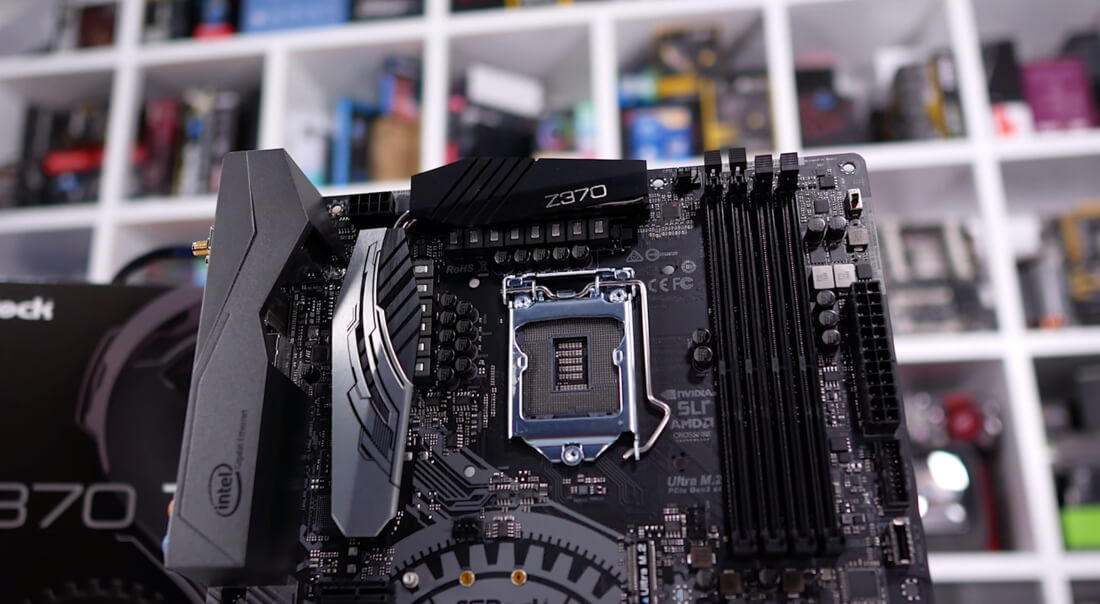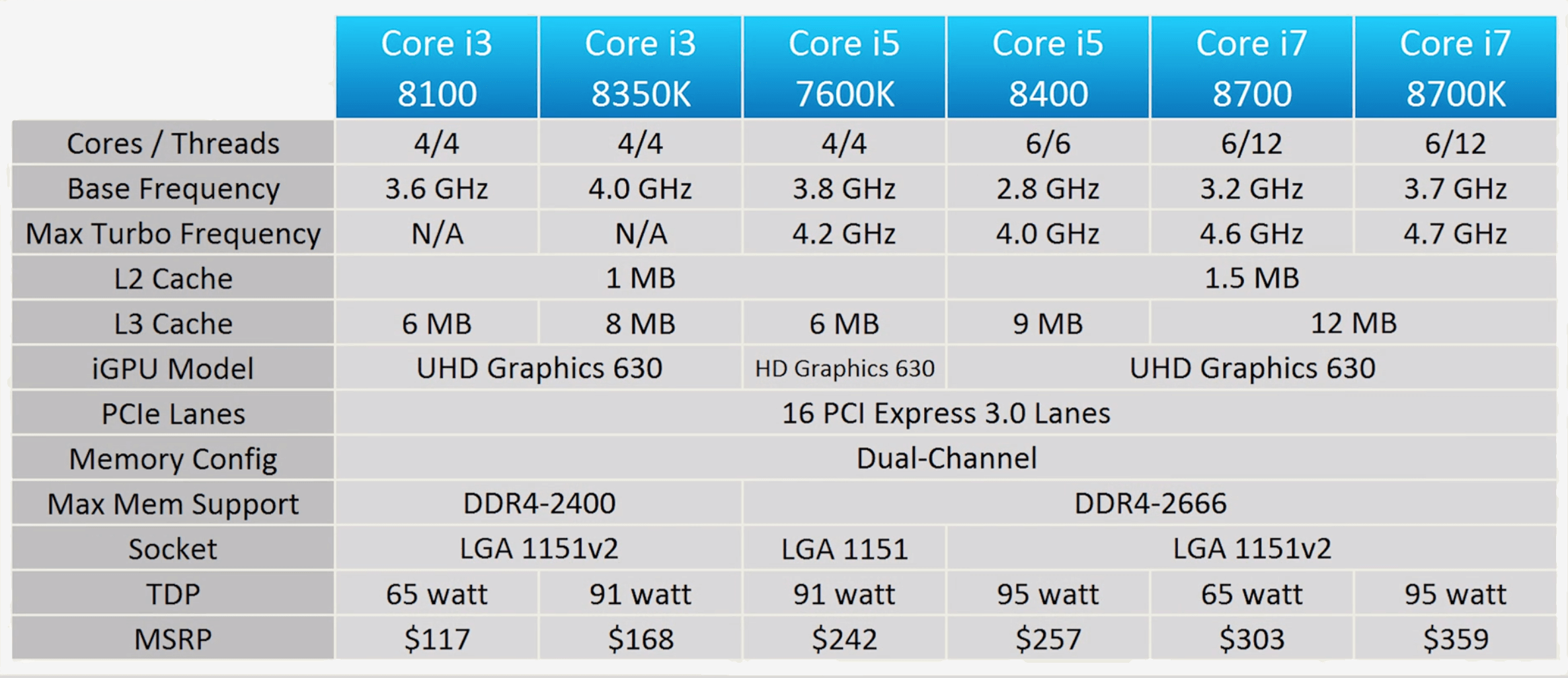Today we're checking out the most affordable six-core processor ever released, and this time it's not from AMD. With an MSRP of $182, the Core i5-8400 is even more affordable than the $215 Ryzen 5 1600, though it can't be overclocked and lacks HyperThreading, so there aren't 12 threads on tap as with the Ryzen chip.
Intel's six-core solution should nonetheless be ample for gamers and may even be the new go-to solution for budget builders. Those folks would do best to avoid the Z370 chipset considering it's typically more expensive and only enables overclocking for unlocked parts, though there is not much choice as the moment.
As you may realize, AMD was a bit cheeky and somewhat annoying by using B350 and X399 for its Ryzen chipset names. Intel has B250 motherboards as well as those with an X299 chipset, so the move was bound to cause confusion among shoppers.
Intel has decided to one up the buggers this time around with 'B360' boards. Bigger is always better and consumers know this, so that's a win for Intel.
The one issue for those after an Intel B360 board is the fact that they won't be available until next year – only the Z370 chipset will be released in 2017. Also remember that Intel's Coffee Lake CPUs aren't a drop-in upgrade for Z170 and Z270 platforms, since Intel "changed the alignment of the design."
For now, Core i5-8400 shoppers will have to go with the cheapest Z370 board they can dig up, which means spending about $120 currently. Assuming you can pair the 8400 with a relatively cheap motherboard, it seems to have exposed a hole in the Ryzen lineup.
Intel has priced the i5-8400 alongside AMD's $190 Ryzen 5 1500X, which only features four cores, though it does have eight threads and that might place them on par in terms of resources.
This should be an interesting battle and given the price and spec differences between the two parts, we're curious to see where they stand in terms of value at the end.
Coffee Lake System Specs
|
Kaby Lake System Specs |
Ryzen 7 System Specs
|
Skylake-X System Specs |
Benchmark Time
Memory and Application Performance
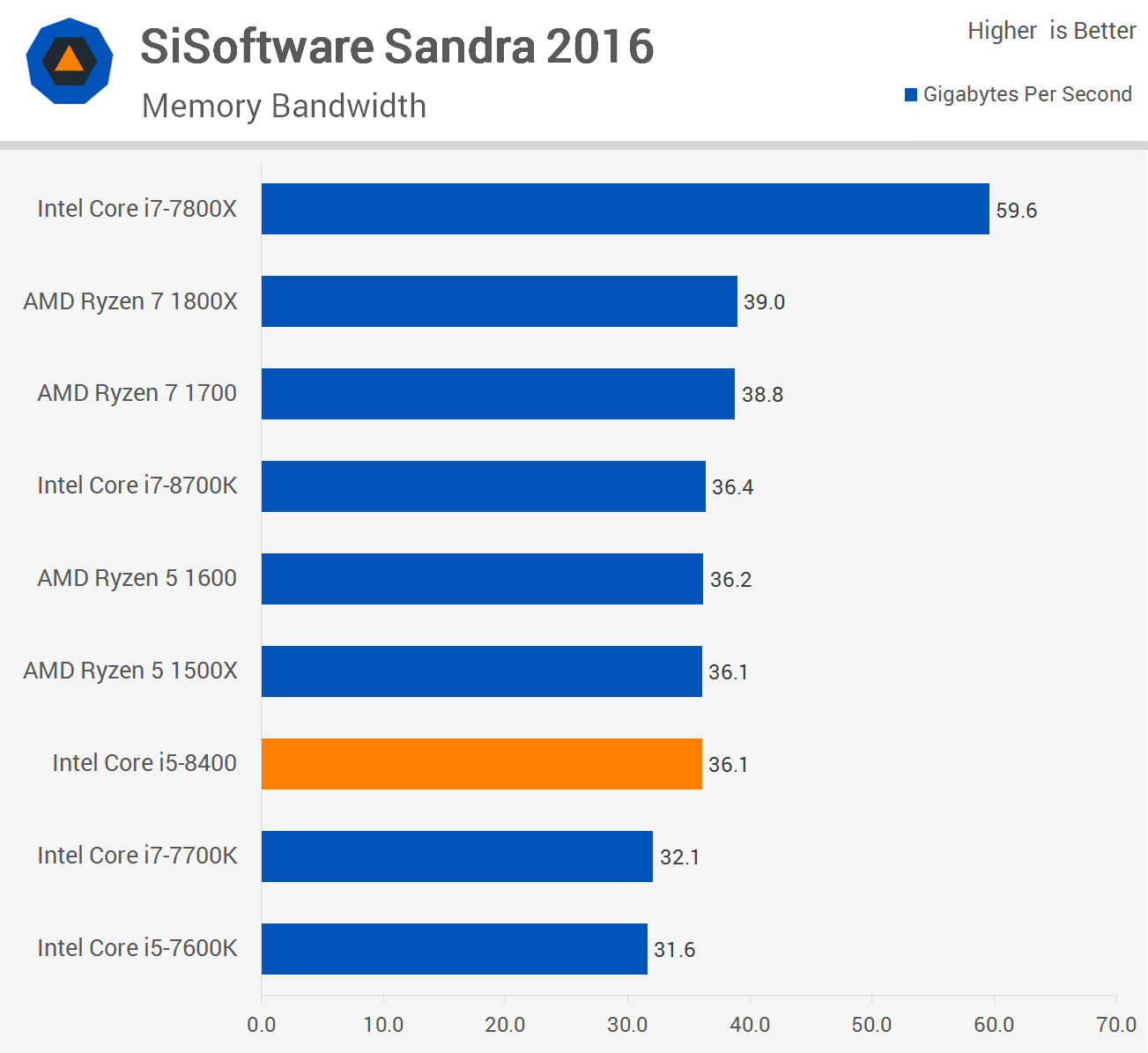
Full disclaimer: we have tested the Core i5-8400 on a Z370 motherboard using DDR4-3200 memory but it's very likely that when paired with a B360 board next year you will be limited to DDR4-2666 or 2400 memory speeds, so keep that in mind.
For those using a Z370 board it's possible to install DDR4-3200 memory and doing so enables a bandwidth of 36GB/s, placing the Core i5-8400 on par with the Core i7-8700K.

Moving on we have some Cinebench R15 results and here the i5-8400 was good for a multi-threaded score of 869pts, 9% faster than the Ryzen 5 1500X and just 13% slower than the previous Intel flagship part, the Core i7-7700K. It was also 23% slower than the Ryzen 5 1600, though the single thread score was almost 20% higher, so it will be interesting to see how the Core i5-8400 and Ryzen CPUs compare in real-world applications.

Before we get to that though here is a quick look at the PCMark 10 results. This test really likes clock speed, certainly more so than cores. As a result the new Core i7-8700K does very well, as does the Core i5-8400 which proved to be 12% faster than the Ryzen 5 1600.

The Excel Monte Carlo simulation makes good use of many cores and threads. As a result the Core i5-8400 was 22% slower than the Ryzen 5 1600 and 5% slower than the 1500X. That said, it was a decent step up from the previous generation's Core i5-7600K, completing the workload 12% faster.
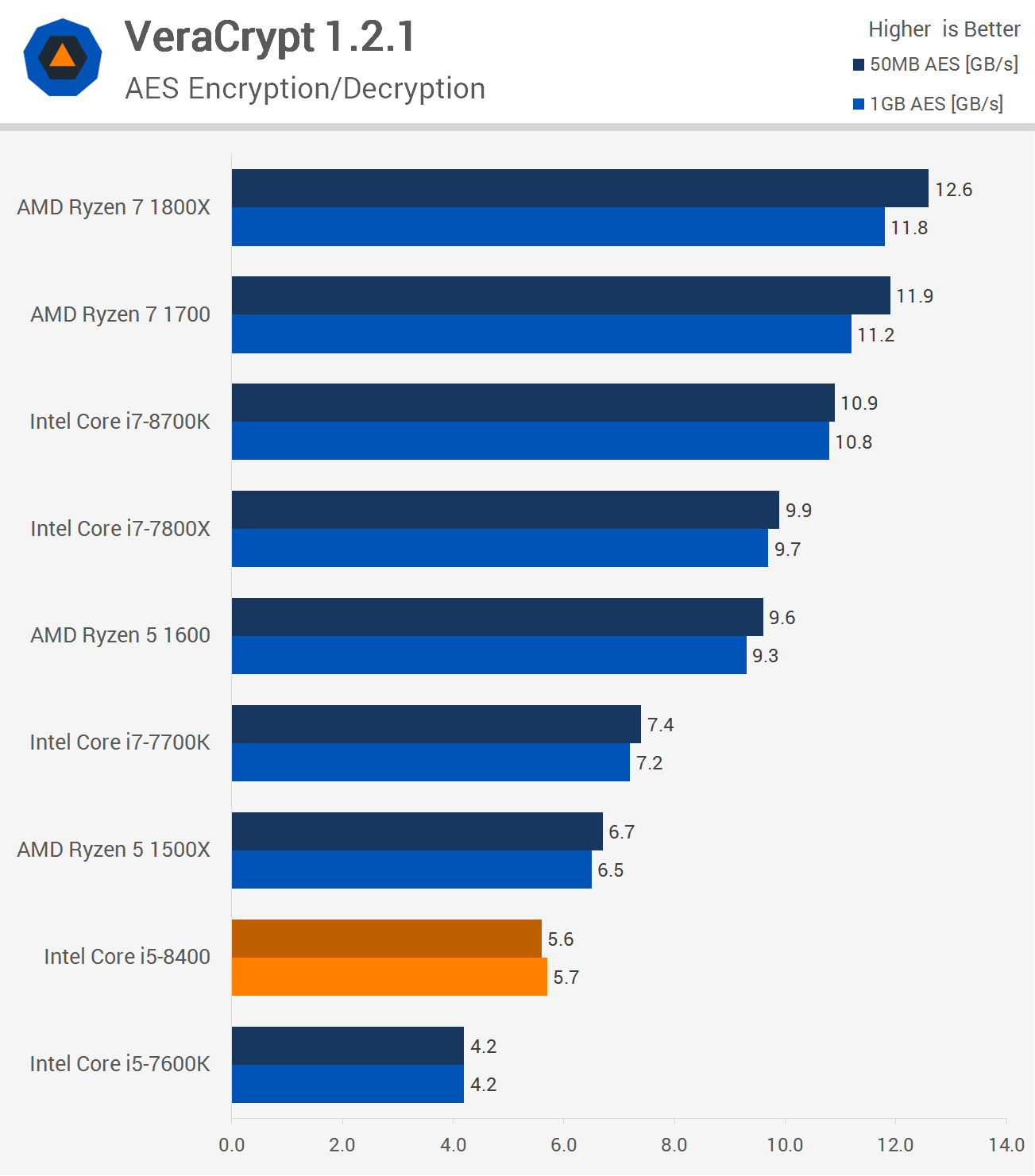
The Core i5-8400 also comes in well behind the Ryzen competition in the VeraCrypt benchmark. Here it was almost 40% slower than the Ryzen 5 1600 and 12% slower than the 1500X. That said, it was again much faster than the 7600K, offering around 36% greater throughput.
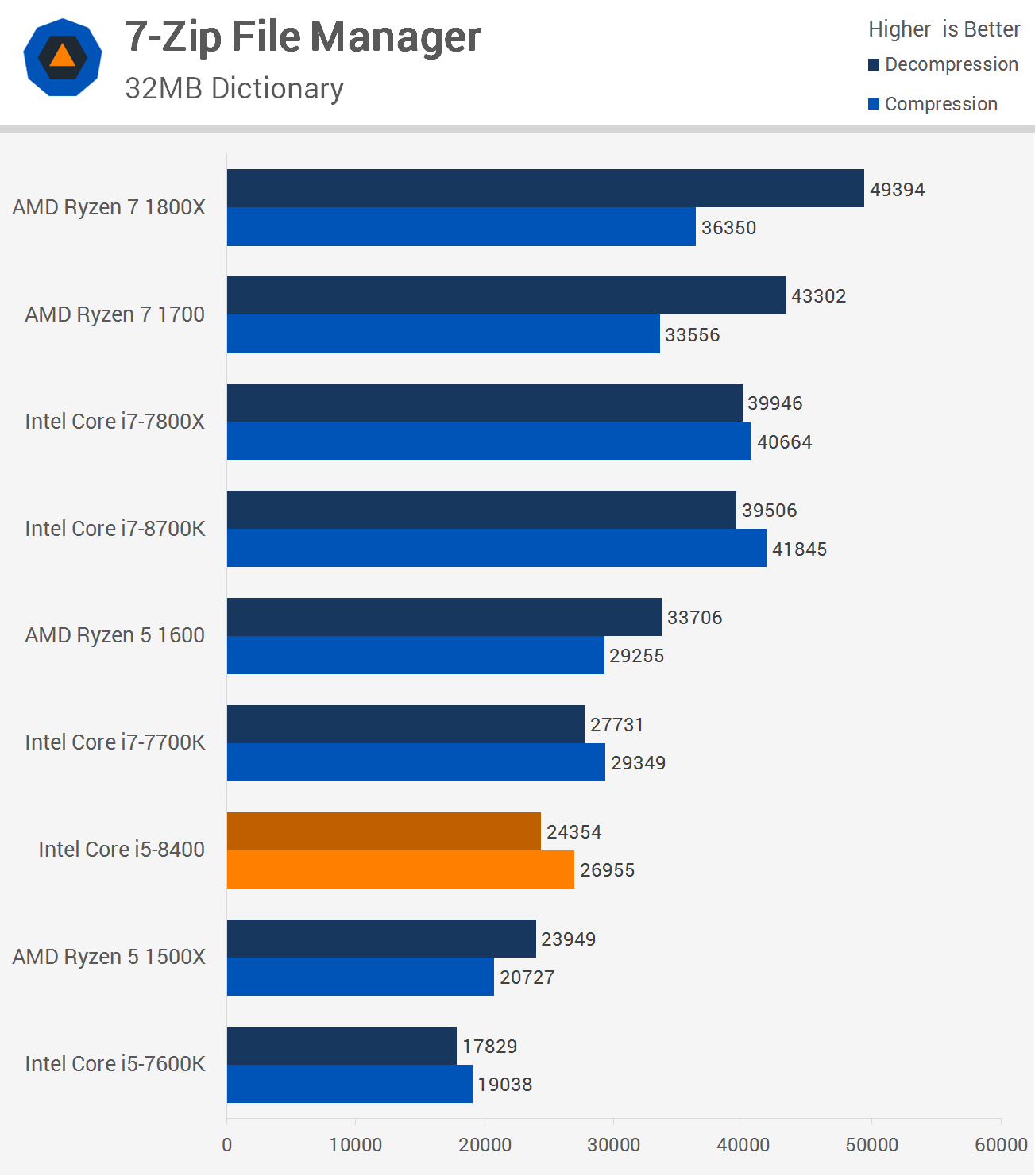
Moving to 7-Zip the Core i5-8400 is able to just edge out the Ryzen 5 1500X in the decompression test, while crushing it for the compression work. However, it was slower than the Ryzen 5 1600 for both compression and decompression work.

